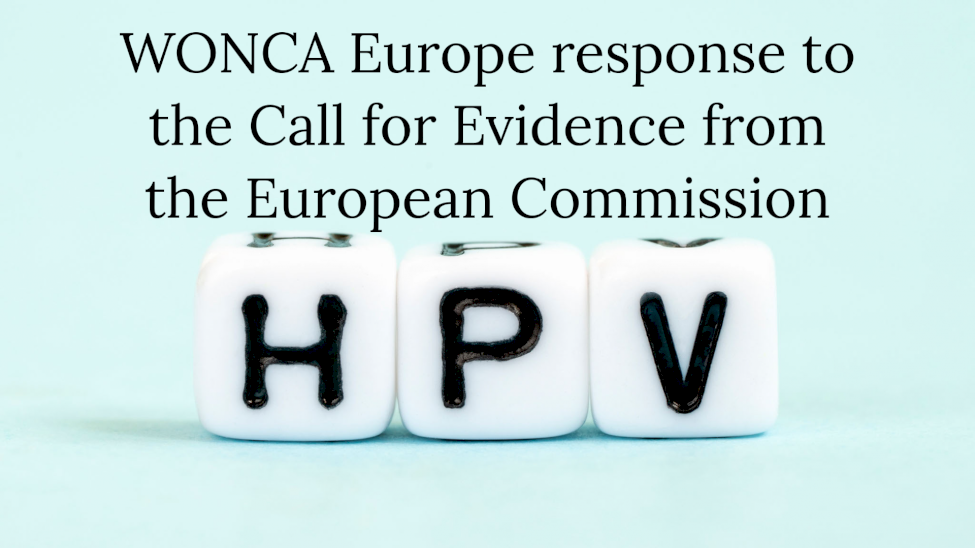Date: 27th January 2023
Elena Garví and Silvia Romeo
Focused Topic Networks Team, European Cancer Organisation
Subject: Collective response to the Call for Evidence from the European Commission - feedback on future initiatives to increase the uptake of vaccination against the Hepatitis B virus and human papillomaviruses
Immunization is a global tool that saves millions of lives and has a vital role in preventing and controlling infectious diseases; it is an essential component of primary healthcare services and is an indisputable human right. Vaccination is an easy-to-apply, cost-effective, and highly efficient preventive practice.
- A single dose of HPV vaccination may be a facilitator in increasing vaccine uptake.
- Gender-neutral HPV vaccination will also be effective in breaking prejudices, especially in countries where vaccination lags due to cultural norms.
- [both for HPV and HBV vaccination] Giving catch-up opportunities to people who missed their doses due to the COVID-19 pandemic,
- [both for HPV and HBV vaccination] Organizing vaccination campaigns in communities with health inequalities (immigrants, low-income countries and regions, detention facilities, etc.),
- [especially for HPV vaccination] Removing barriers due to high fees by providing free vaccination or financial support, as with COVID-19 immunization can be recommended for increasing vaccination rates.
- An important target audience is young people. The power of social media should be heeded. Effective use of social media should be remembered since the most used place for spreading misinformation is the internet and social media. These channels will play an essential role in conveying the correct information. [both for HPV and HBV vaccination]
- A feasibility study evaluating hepatitis B vaccination in school-age populations showed that it is possible and practical to administer hepatitis B vaccination to adolescents in the school setting, and the completion rate of the vaccination scheme (3 doses) is relatively high. Therefore, especially in adolescents, school settings can be used for vaccination.
- In countries where the HPV vaccine is not applied or only applied to girls, there may be a lack of knowledge of healthcare professionals or may not recommend the vaccine. Healthcare professionals should not be forgotten while educating the target population.
- Ensuring continuity in family practice settings and providing person-centred care can increase the HPV vaccine uptake by using measures at different visits of adolescents.
- We want to emphasize the widespread use of interventions that were shown to be effective in the Umbrella review of HPV vaccination. Also, given that studies in systematic reviews examining vaccine uptake initiatives are mainly from a few (high-income) countries, more research should be conducted to identify effective methods in low- and middle-income countries, different cultures and settings.
References:
- WHO (2022). Immunization coverage. 14 July 2022. URL: https://www.who.int/news-room/fact-sheets/detail/immunization-coverage. Accessed: 17 January 2023.
- Regional Committee for Europe, 72nd session. (2022). Seventy-second Regional Committee for Europe: Tel Aviv, 12–14 September 2022: roadmap to accelerate the elimination of cervical cancer as a public health problem in the WHO European Region 2022–2030. World Health Organization. Regional Office for Europe. https://apps.who.int/iris/handle/10665/361293
- Alarcão, V., & Zdravkova, B. (2022). Attitudes and Practices towards HPV Vaccination and Its Social Processes in Europe: An Equity-Focused Scoping Review. Societies, 12(5), 131.
- Borges do Nascimento IJ, Pizarro AB, Almeida JM, Azzopardi-Muscat N, Gonçalves MA, Björklund M, Novillo-Ortiz D. Infodemics and health misinformation: a systematic review of reviews. Bull World Health Organ. 2022 Sep 1;100(9):544-561. doi: 10.2471/BLT.21.287654. Epub 2022 Jun 30. PMID: 36062247; PMCID: PMC9421549.
- Zuckerman J, Langer B. Hepatitis B vaccination in a school age population: a feasibility study. JMed Virol. 2005 May;76(1):47-54. doi: 10.1002/jmv.20335. PMID: 15778966.
- Eisenhauer L, Hansen BR, Pandian V. Strategies to improve human papillomavirus vaccination rates among adolescents in family practice settings in the United States: A systematic review. J Clin Nurs. 2021 Feb;30(3-4):341-356. doi: 10.1111/jocn.15579. Epub 2020 Dec 16. PMID: 33270305.
- Edwards, D., Bennett, C., Sherman, S., Karafillakis, E., Prue, G., Sarıca Çevik, H., ... & Kelly, D.(2022). Improving HPV Vaccine Uptake in Children, Adolescents, and Young Adults: An Umbrella Review of Interventions. URL:https://www.europeancancer.org/resources/255:hpv-vaccine-uptake. Accessed: 17 January 2023.
WONCA Europe would like to acknowledge and give the warmest thanks to Prof. Dr. Mehmet Ungan and Dr. Husna Sanca Cevik from Ankara University School of Medicine who prepared such an important document.
On behalf of the WONCA Europe Executive Board
Prof. Dr. Shlomo Vinker
WONCA Europe President
Click here to view pdf file

